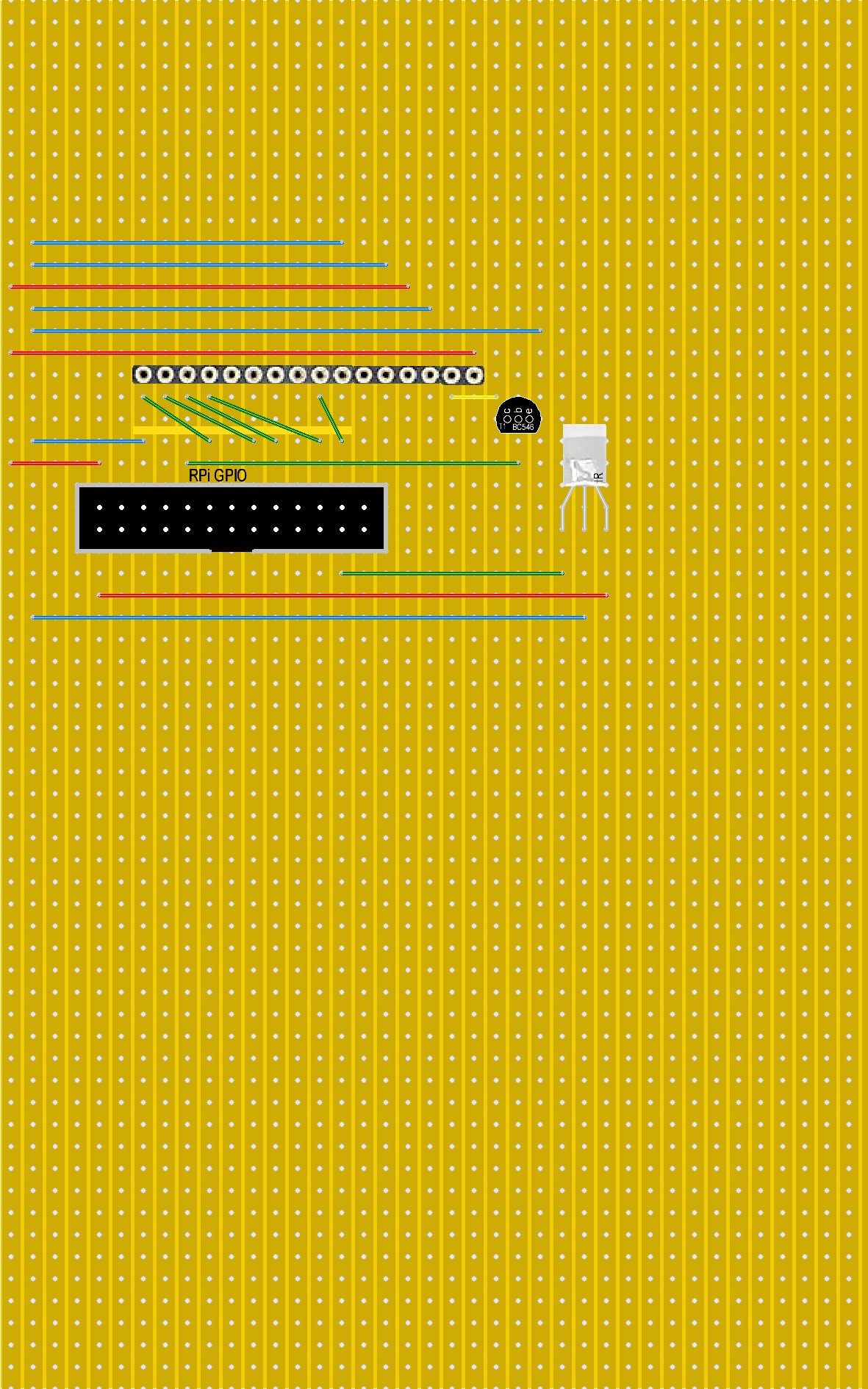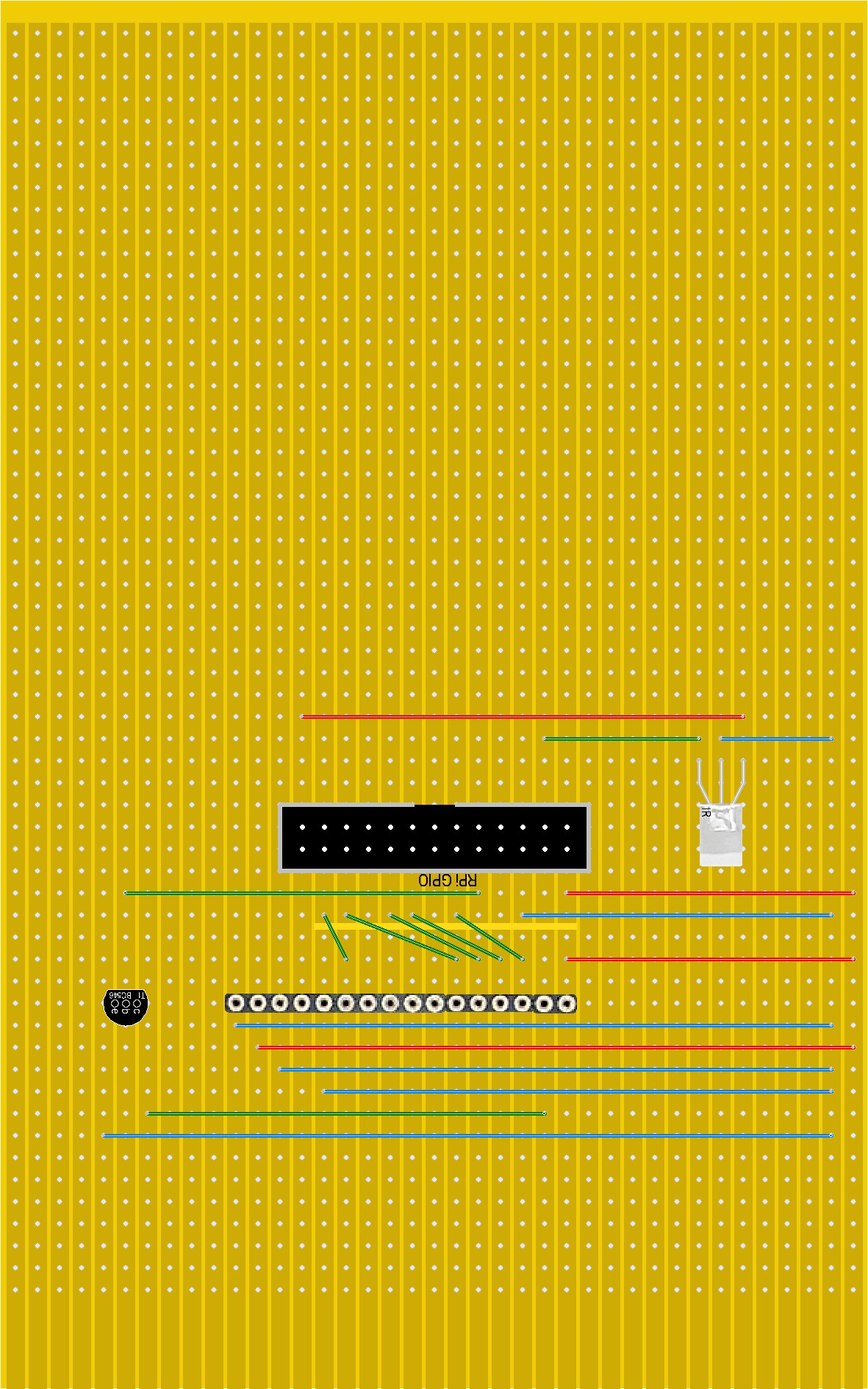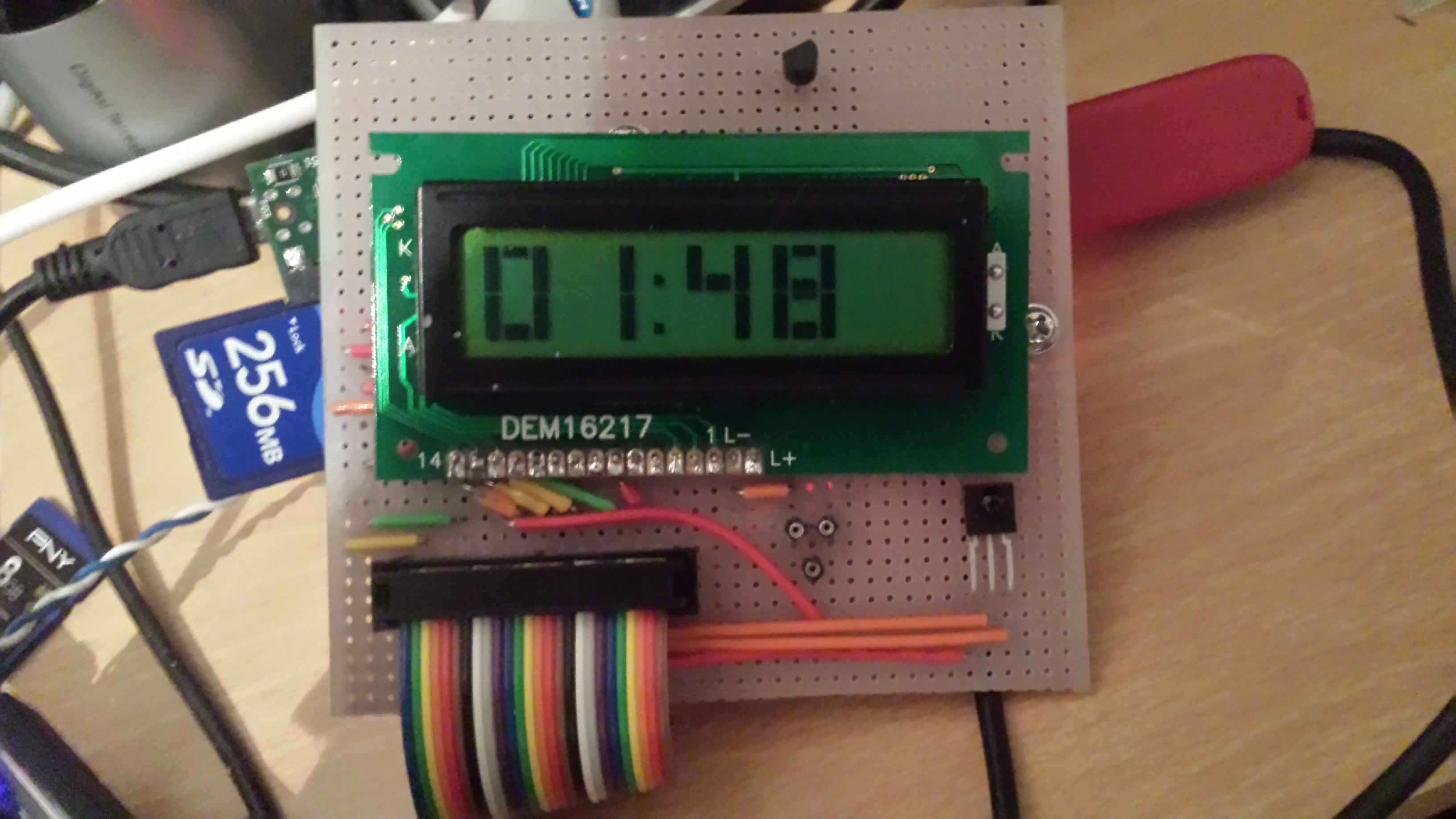Building An IO Board
So
now we (hopefully) have a working LCD and IR receiver sitting on a
breadboard. wouldn;t it be better to mount all this on a seperate
board? This process took me most of a day because I am very clumsy with
a soldering iron and every time I soldered a joint I stopped to test
each join to make sure I hadn't accidentally bridged a connection
(Which I did several times).
Hopefully you will be better at this than I am, this was my first ever
attempt at building my own board.
What you will need:
- A soldering iron and solder
- A stripboard (Pick one up at your local Maplins)
- A Spot face cutter for the stripboard
- An IR Module
- An LCD Module
- A PNP type transistor
- Some Jumper cable
- A heatsink clamp (For the
transistor IMPORTANT!)
- A multimeter (optional -but very handy)
- A desoldering pump or braid (For when you accidentally
solder a wire to the wrong strip. Again, I did this multiple times)
Design Your Board Layout
I
would not recommend doing this on the fly, best to get some form of
stripboard design laid out first. You can either do it on paper or get
some stripboard design softeware. I used Lochmaster to do my layout and
it's fairly simple to use. You can get a demo version of it to try it
out.. Here's the layout I designed:

It's
not visible on the board layout, but you will have to break the tracks
between the row of pins on the Pi Connector. The Spot Face cutter can;t
do this as it breaks connections on the pin holes. I used a dremel to
carefully cut the connections.,
You'll
note that in this layout, I have just put pin sockets where the LCD
board will plug in. In actuality I soldeed the LCD directly to the
board but I wouldn;t recommend it. easier to get some pin sockets so
that you can unplug the LCD board easily.
Also if, like me, you're
new to soldering components, it is important to clip a heatsink clip to
each leg of the transistor as you solder it. Transistors are easily
damaged by heat. As I found out three burned out trnasistors later.
If
you bought a standard HD44780 LCD board, as explained previously, the
pin layout is slightly different so here's a design for the HD44780
board

Once you are done you can (Very carefully) trim of the unused parts of
the board with a junior hacksaw
be careful doing this, however, as you may break some solder joints. (Yep, I did that too)
Once your done you should (hopefully) be left with something like this:

You'll
probably note that my transistor is not in the position on my design.
this was due to my cockups and destroying three transistors before
learning about how to properly solder a transistor.


